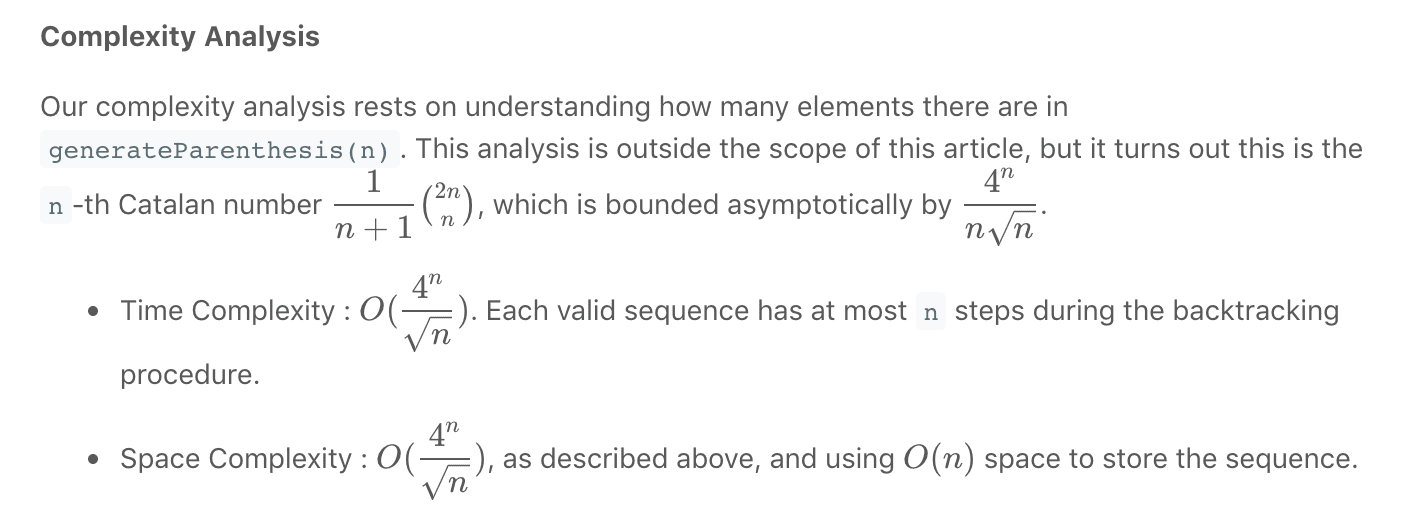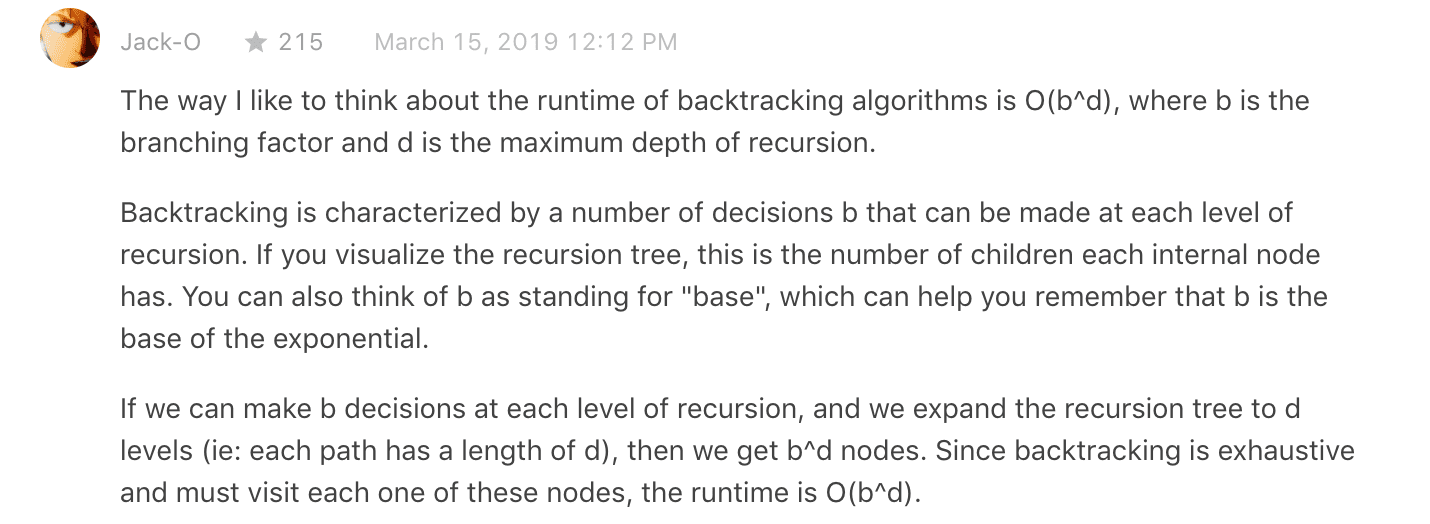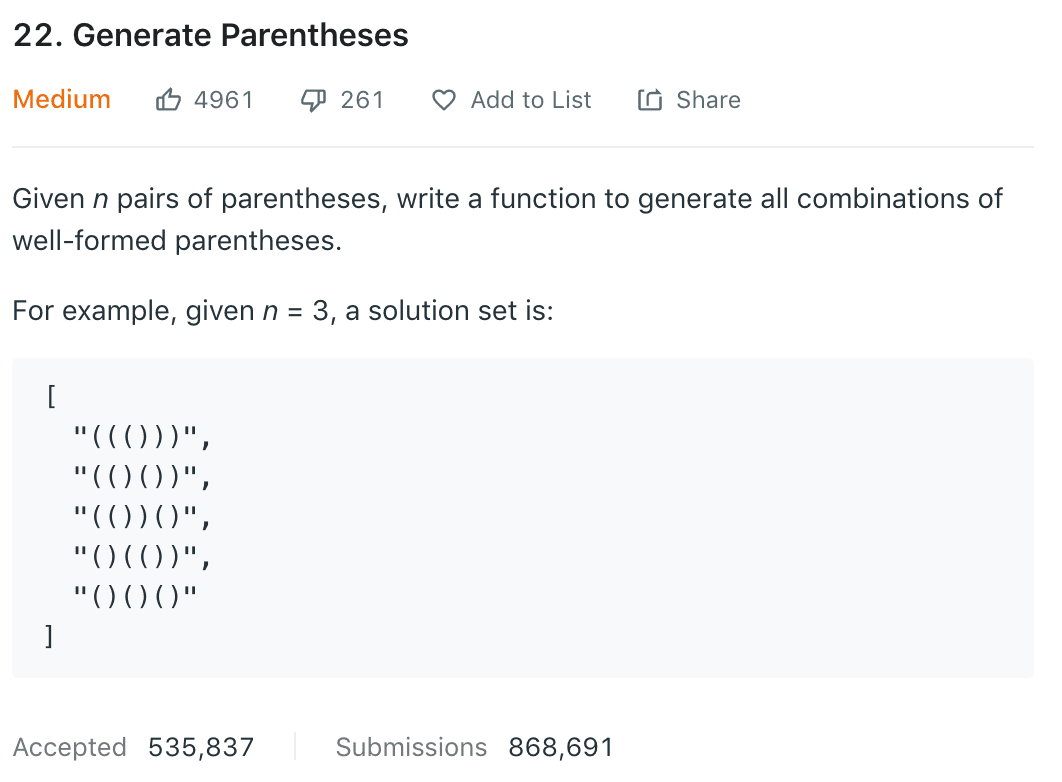Backtracking1
2
3
4
5
6
7
8
9
10
11
12
13
14
15
16
17
18
19
20
21
22
23
24
25
26
27
28
29
30class Solution {
public List<String> generateParenthesis(int n) {
if(n==0) return new ArrayList<>();
if(n==1) return new ArrayList<String>(Arrays.asList("()"));
Set<String> set=new HashSet<String>();
for(String str:generateParenthesis(n-1)){
for(int i=0;i<str.length();i++){
set.add(str.substring(0,i)+"()"+str.substring(i,str.length()));
}
}
List<String> list = new ArrayList<String>(set);
return list;
}
}
/*
class Solution {
public List<String> generateParenthesis(int n) {
List<String> ans= new ArrayList();
backtrack(ans,"",0,0,n);
return ans;
}
public void backtrack(List<String> ans, String cur, int open,int close, int n){
if(cur.length()==n*2){
ans.add(cur);
return;
}
if(open<n) backtrack(ans,cur+"(",open+1,close, n);
if(close<open) backtrack(ans,cur+")",open,close+1,n);
}
}*/
link1
2
3
4
5
6
7
8
9
10
11
12
13
14
15
16
17
18
19
20
21
22
23/*
class Solution{
public List<String> generateParenthesis(int n) {
List<String> list = new ArrayList<String>();
generateOneByOne("", list, 0, 0, n);
return list;
}
public void generateOneByOne(String sublist, List<String> list, int left, int right, int n){
if(left < right){
return;
}
if(left < n){
generateOneByOne( sublist + "(" , list, left+1, right, n);
}
if(right < n){
generateOneByOne( sublist + ")" , list, left, right+1, n);
}
if(left == n && right == n){
list.add(sublist);
return;
}
}
}*/
Explanation
Approach 3: Closure Number (DP)
First consider how to get the result f(n) from previous result f(0)…f(n-1).
Actually, the result f(n) will be put an extra () pair to f(n-1). Let the “(“ always at the first position, to produce a valid result, we can only put “)” in a way that there will be i pairs () inside the extra () and n - 1 - i pairs () outside the extra pair. link
1 | class Solution { |

Time Complexity Analysis:

